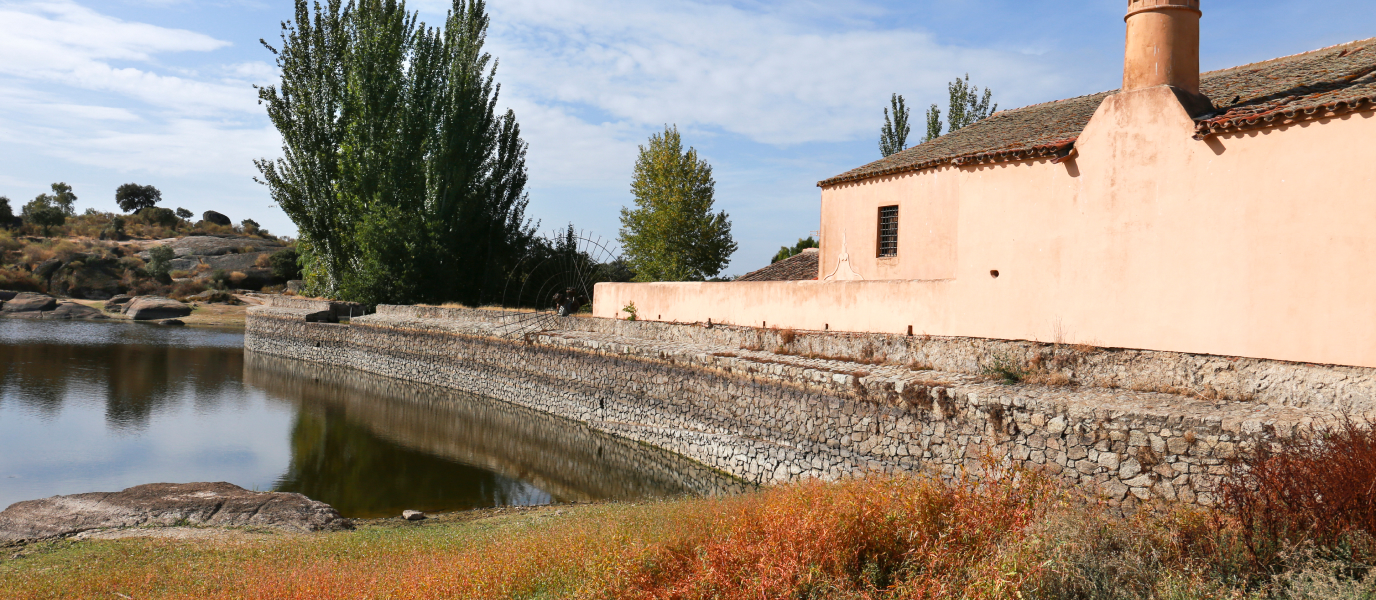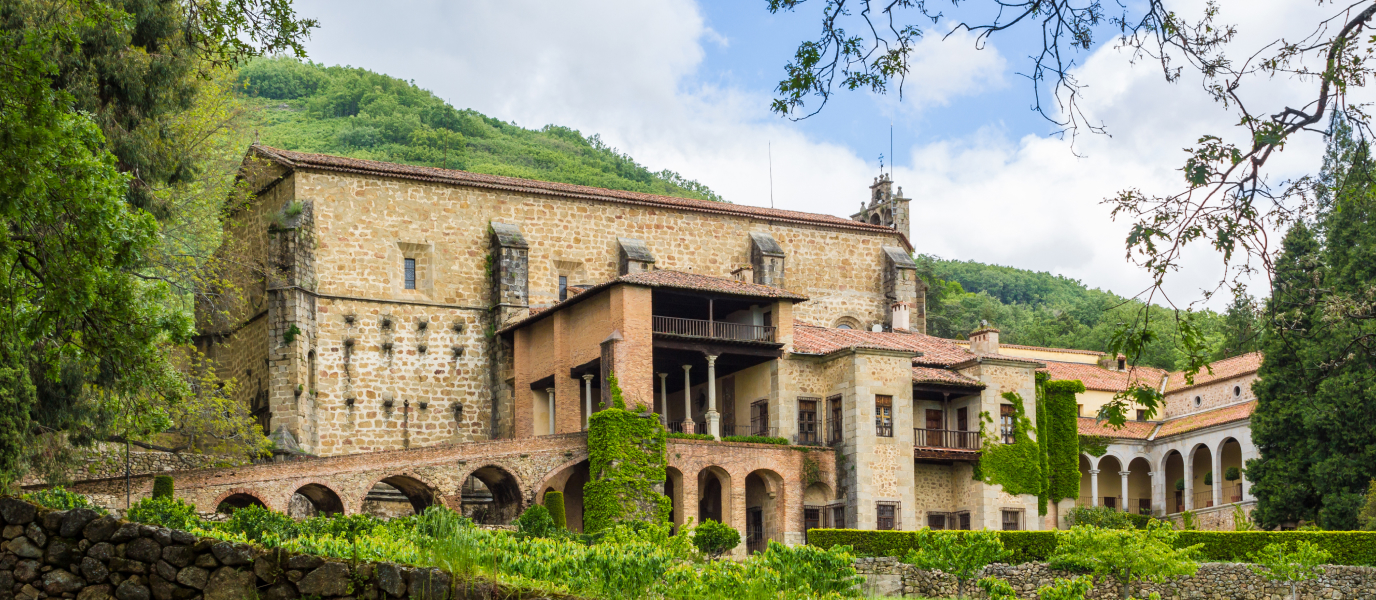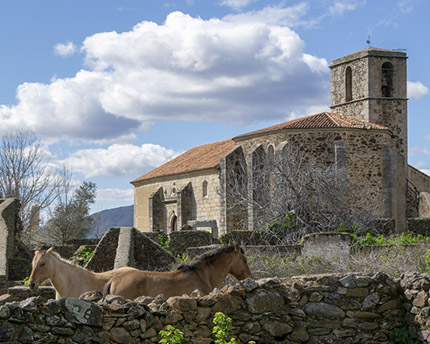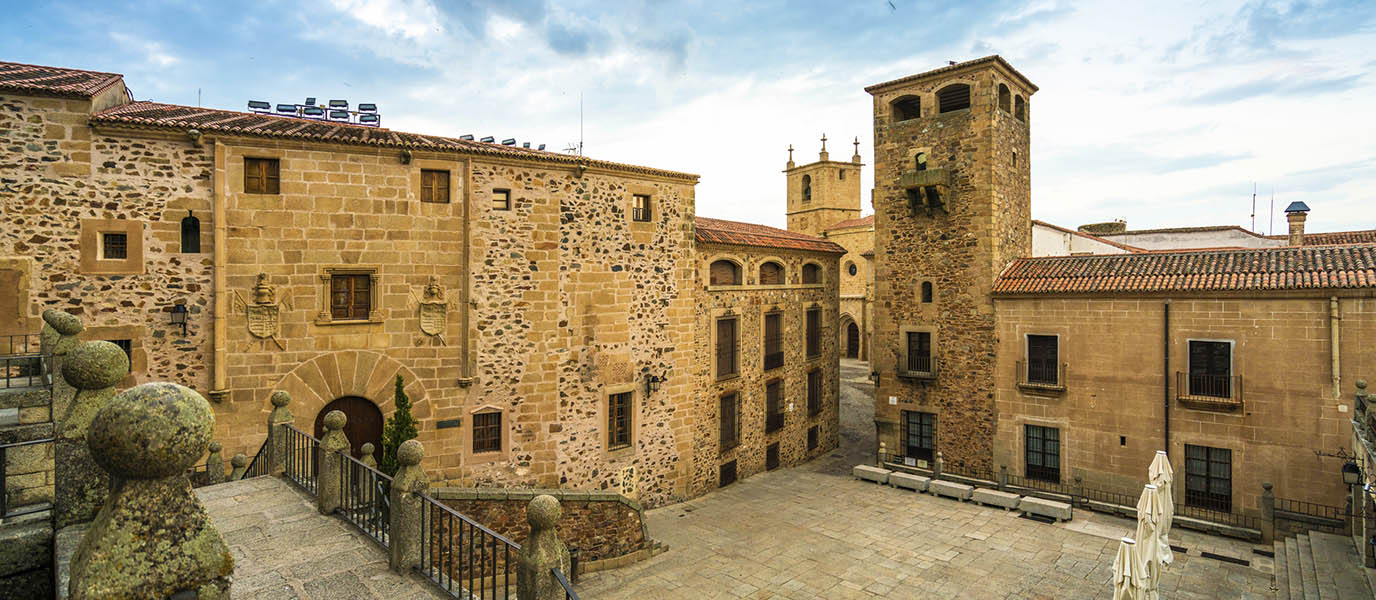The unusual granite formations and marshes of Los Barruecos, in the Malpartida municipality, led the Regional Government of Extremadura to designate it a ‘natural monument’ in 1996. It is less than 16 kilometres from Cáceres.
Its name comes from the word barruecos (or berruecos) which means granite rocks or boulders, which you can see everywhere, dotted around the evocative landscape.
From a distance the rounded masses of rock, weathered through aeons of rain, wind and extreme heat and cold, might look to the confused traveller like an enchanted castle. Over time, these rocks with their enchanting allure have been carved to be used to lay the departed to their eternal rest, painted during Neolithic times and more recently used as the setting for epic battles in the most successful fantasy series of the decade. Let yourself be bewitched by this charming landscape.
The scenery of Los Barruecos in Cáceres
The strange Los Barruecos landscape emerges, almost out of nowhere, in the midst of the steppe-like plains of Malpartida, on the outskirts of Cáceres. The granite soils are able to store water from the light rainfall in spring and autumn in large reservoirs. It has an extraterrestrial feel, with large granite boulders of different shapes and sizes strewn around. It never ceases to amaze geologists around the world.
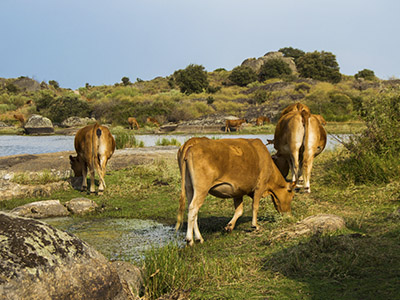
The unforgiving skies of Extremadura, the rocky formations and the parallel world reflected on the water of the reservoirs and ponds make Los Barruecos one of Spain’s most special places.
Nature alone has not made this natural monument. Between the 15th and 16th centuries four large reservoirs were built to provide water supply for local farmers and millers all year round: Barrueco de Arriba and Molinillo, the oldest, built in the 16th century; Berrueco de Abajo, dating from the 18th century, which supplied water to the wool-washing house mill and was later filled with contemporary art to become the Vostell Malpartida Museum; and Charca de Frasco Díez, dating from the 19th century.
The most common hiking trails around Los Berruecos run along the edge of these reservoirs. They are straightforward and, depending on the size of the reservoir, take between an hour and an hour-and-a-half to complete.
Los Berruecos is impressive by day but it is breathtaking by night. The immense, clear sky becomes dotted with endless stars, which are also mirrored beneath your feet in the water of the reservoirs. The unwavering presence of the dark, ghostly figures of the granite rocks also adds to the dramatic scene. It is a popular spot for star gazers, although there is some light pollution from the nearby city of Cáceres.
Flora and fauna in Los Barruecos
The nooks and crannies among the rocks and the easy access to the reservoirs make this area a haven for the wildlife of Extremadura, which can sometimes be an inhospitable environment.
Some endangered species have made this place their home, such as the great bustard, lesser kestrel and lesser bustard. Other birds of prey that come here in search of food include the short-toed eagle, the booted eagle and the red kite.
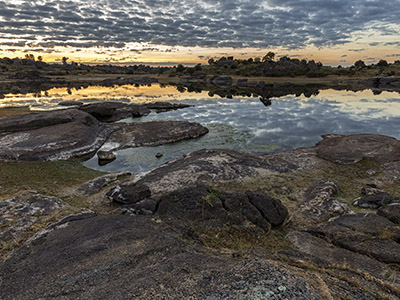
The marshland naturally attracts waterfowl, for example, the great crested grebe, the little grebe and the mallard. The dominant species here, though, is the white stork. In fact, Los Barruecos is considered to be home to the biggest colony of wild white storks in Europe. They are typically seen nesting on the large granite boulders, especially around a group of rocks called Peñas del Tesoro.
The main species of reptile include the Spanish pond turtle and the ocellated lizard, and otters are the most numerous mammal species here.
The tree species that grow on these wetlands include the cork oak, holm oak, Iberian pear, wild olive tree, European nettle tree and willow, and you can also see retama and codeso – shrubby species of flowering plants in the legume family.
Archaeological remains near Malpartida de Cáceres
This strategically located natural enclave was inhabited by humans very early on. One of the most important archaeological sites in Extremadura can be found around the Peña de los Tesoros, and evidence of agricultural activity during the Neolithic era has been discovered in the area. An important group of petroglyphs in the form of symbols have also survived to the present day, which could date from the Chalcoltic Period.
A bit further to the south of Peña de los Tesoros you can find the La Hijadilla burial chamber and just outside Los Barruecos you can see the remains of a late Roman settlement, linked to the Norba Caesarina colony which is now Cáceres. These consist of human-shaped tombs excavated in the granite rock.
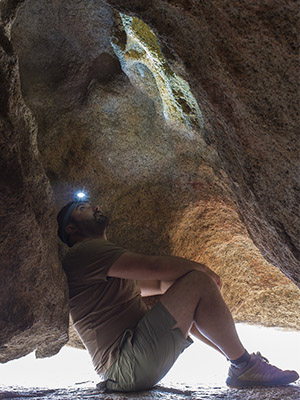
Los Barruecos, the setting for Game of Thrones
In 2016, Los Barruecos became famous when it was chosen to film the epic battle in the seventh season of Game of Thrones, the most successful, award-winning fictional TV series of recent decades.
For 15 minutes of the fourth episode of this season, Los Barruecos becomes the setting of the fierce battle between Lannister and Daenerys, featuring dragons, fire, archers and dead bodies strewn across the battlefield.
Aware of the legions of fans who visit the area following the star appearance of Los Barruecos in Game of Thrones, the Tourist Board of the Regional Government of Extremadura decided to create a signposted hiking route. This is the route formerly known as the Charca del Barrueco de Arriba route.




































































